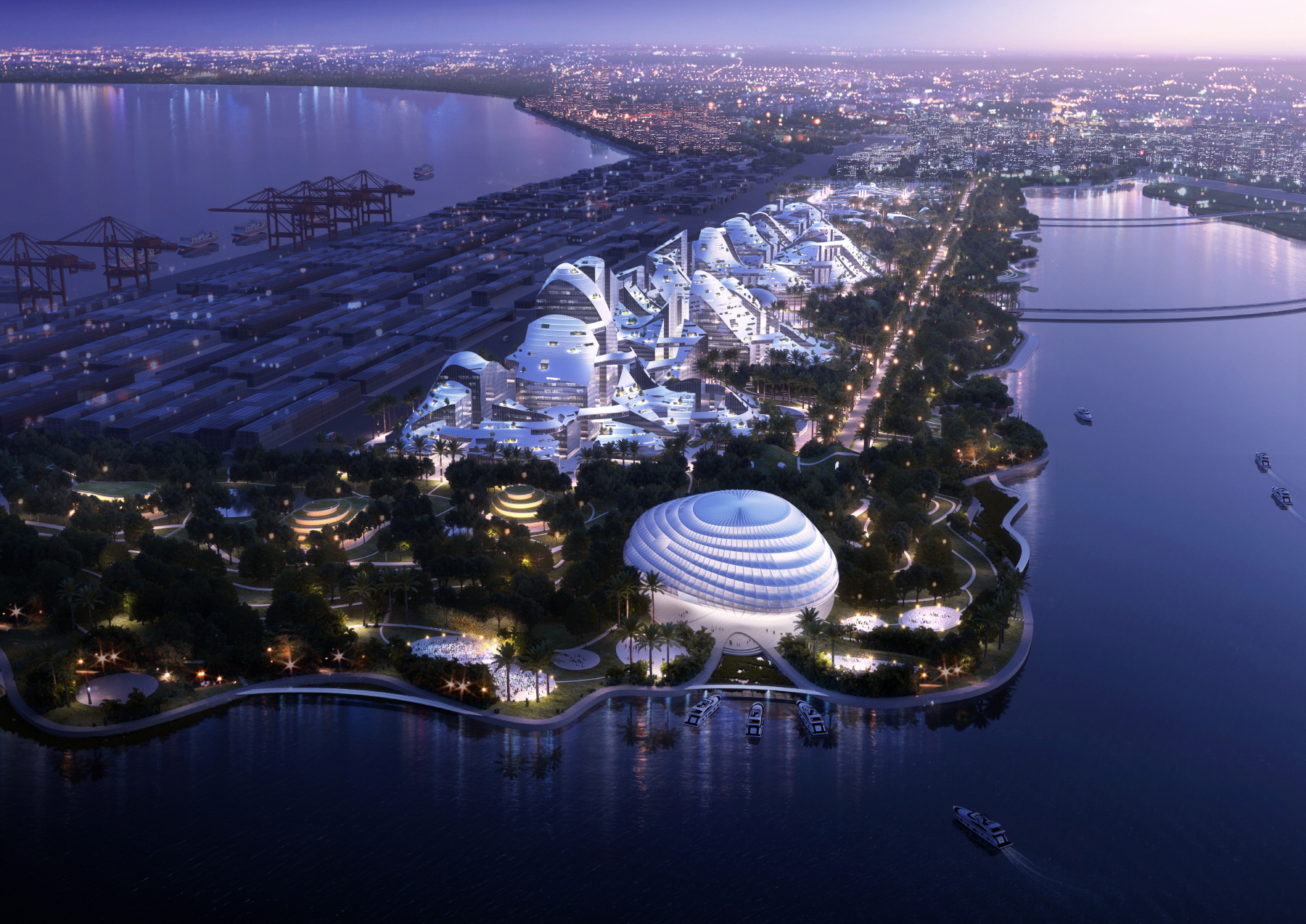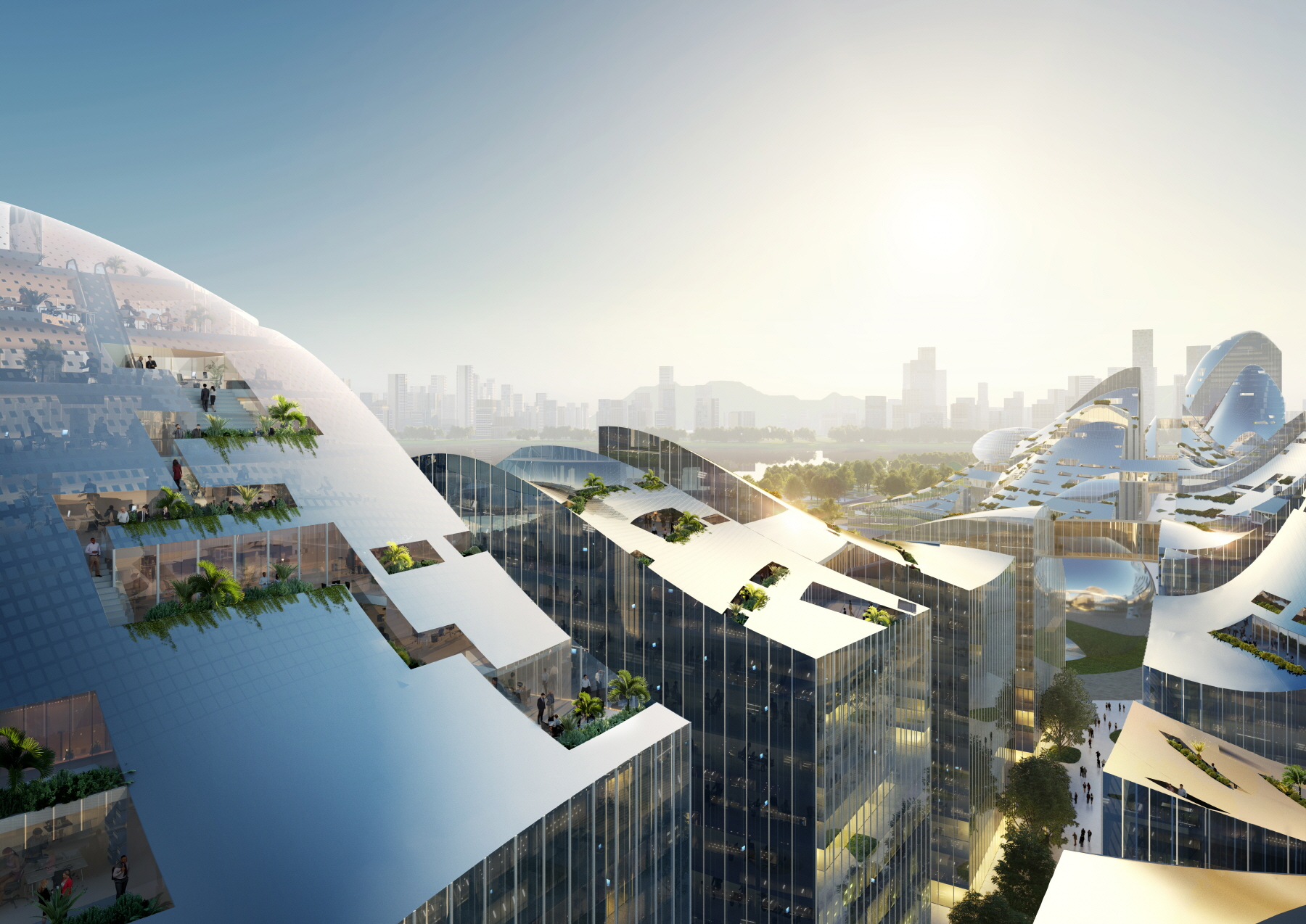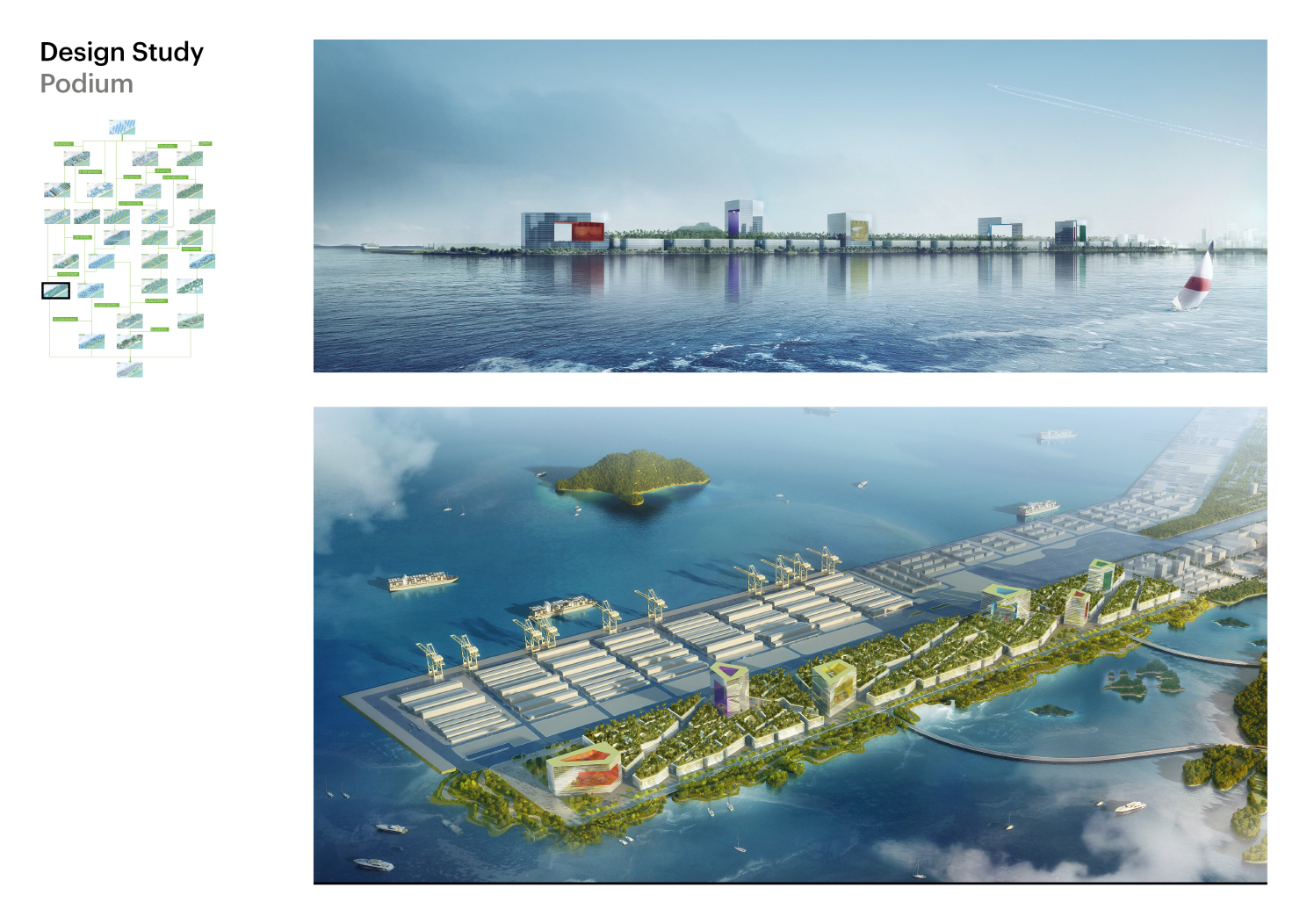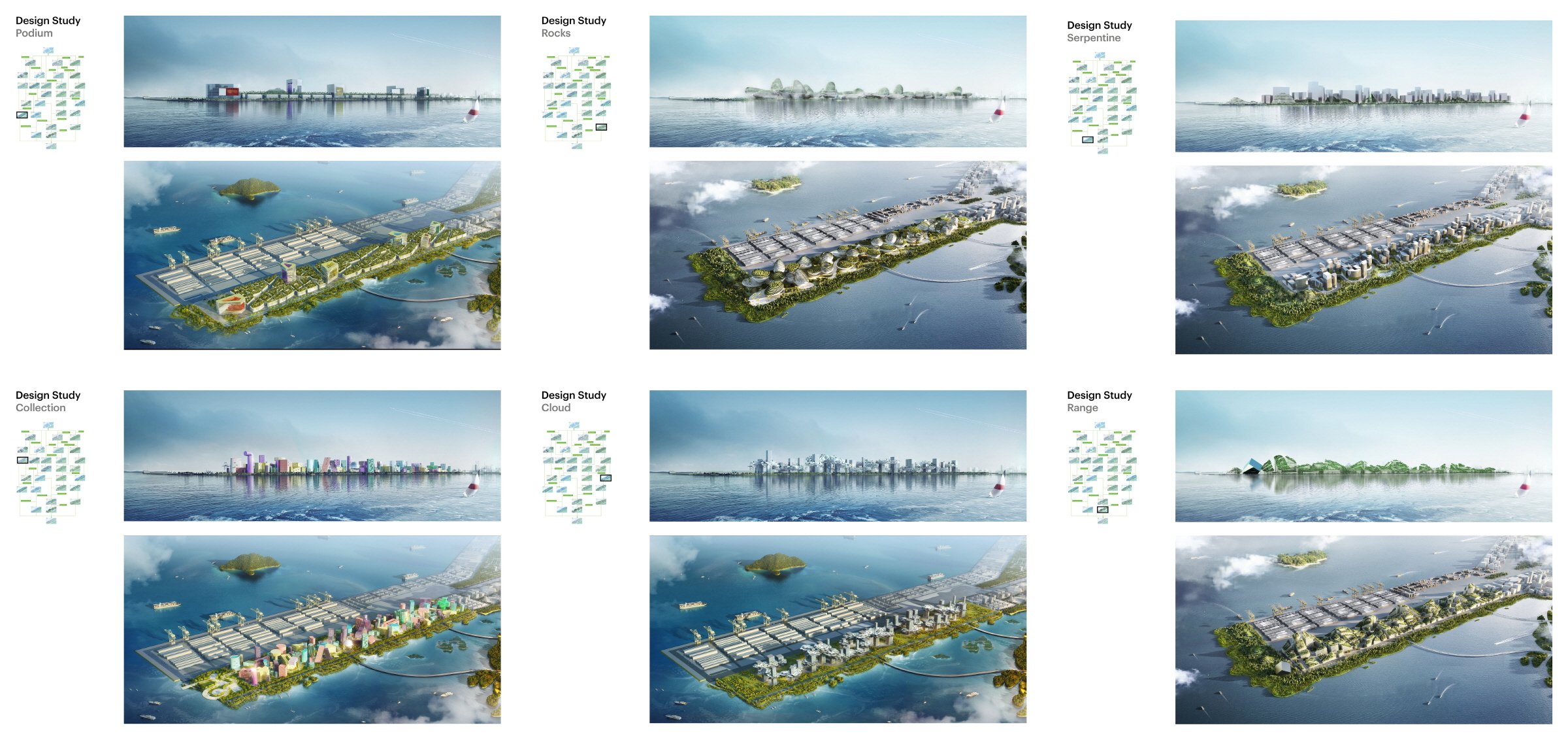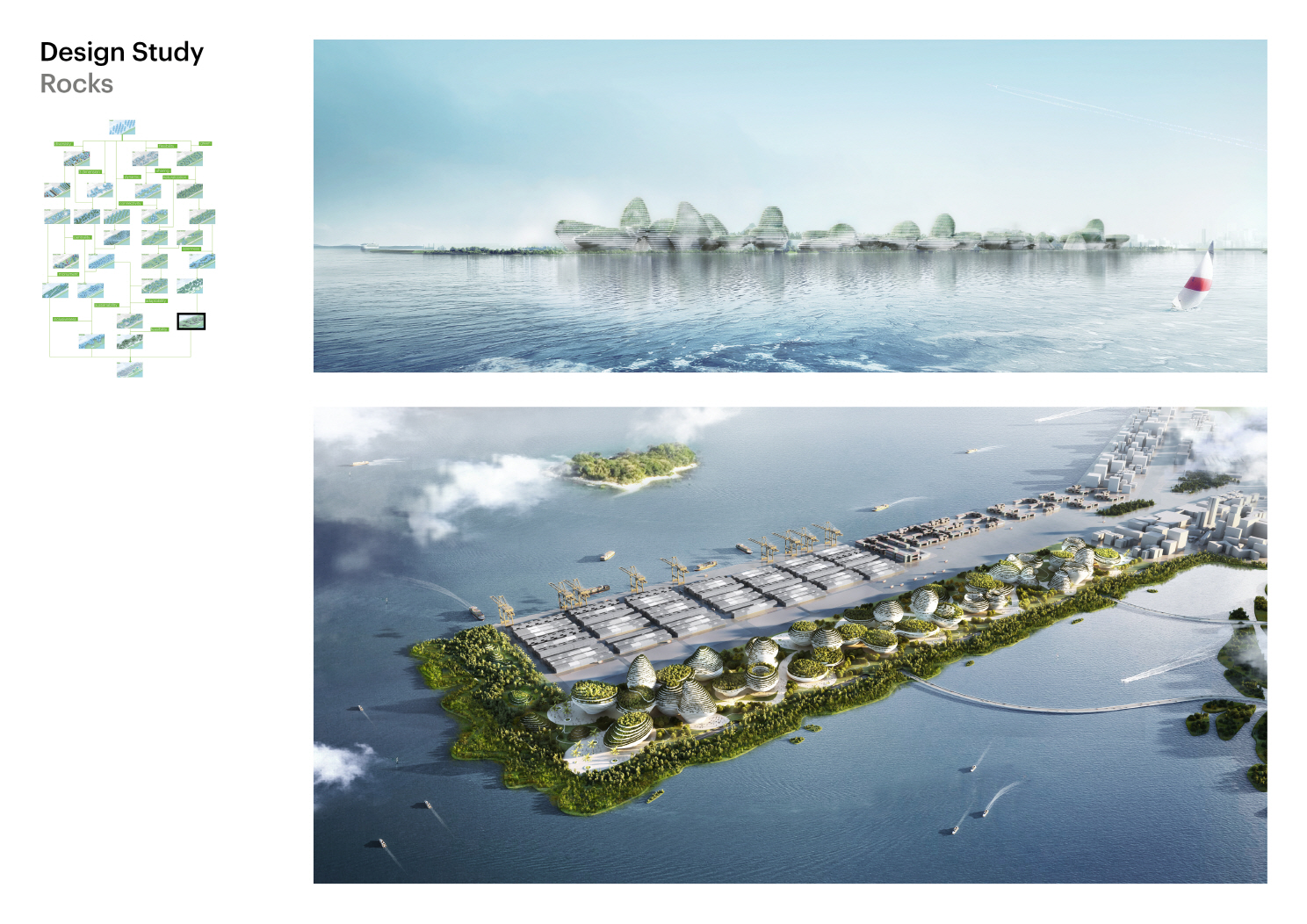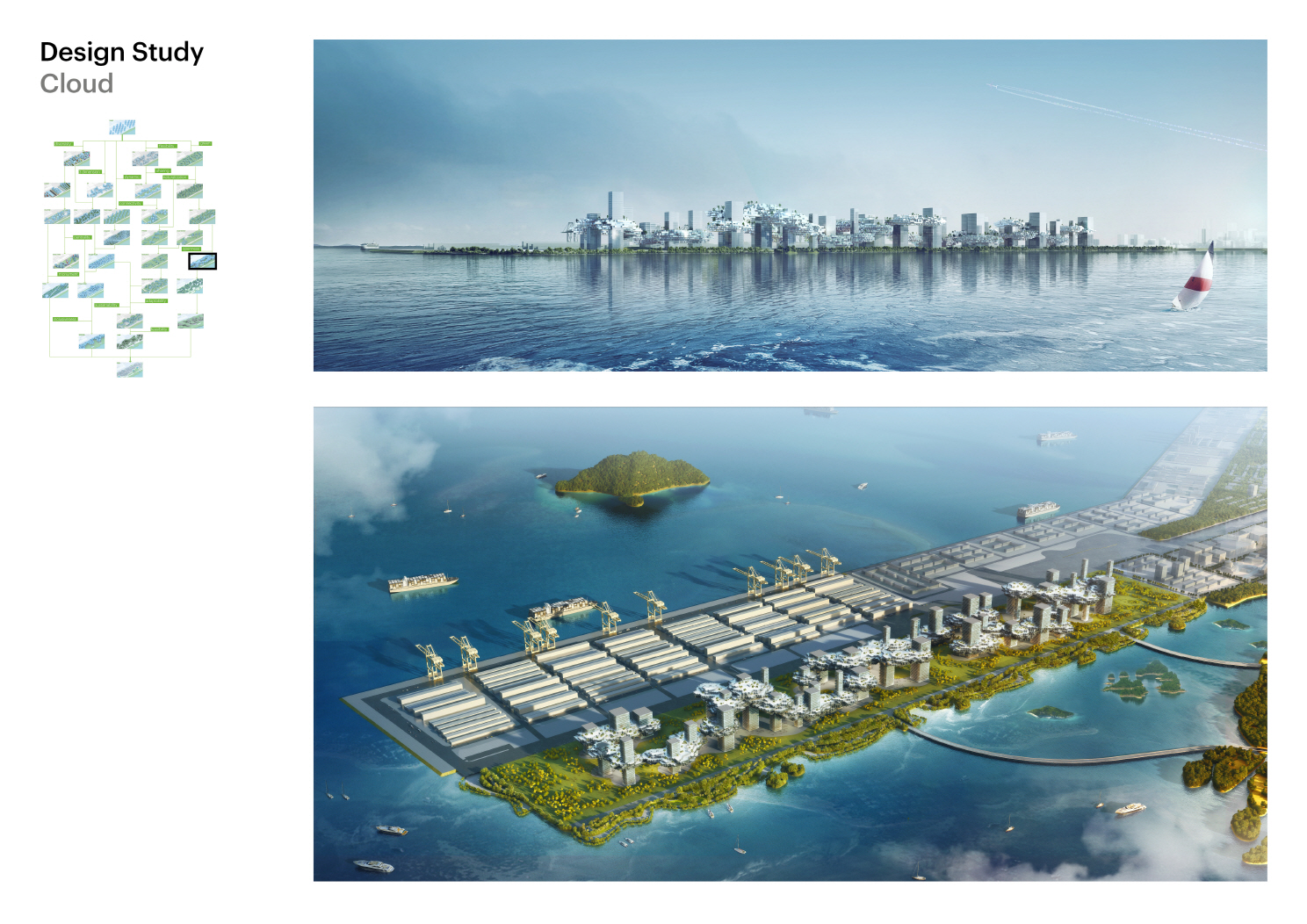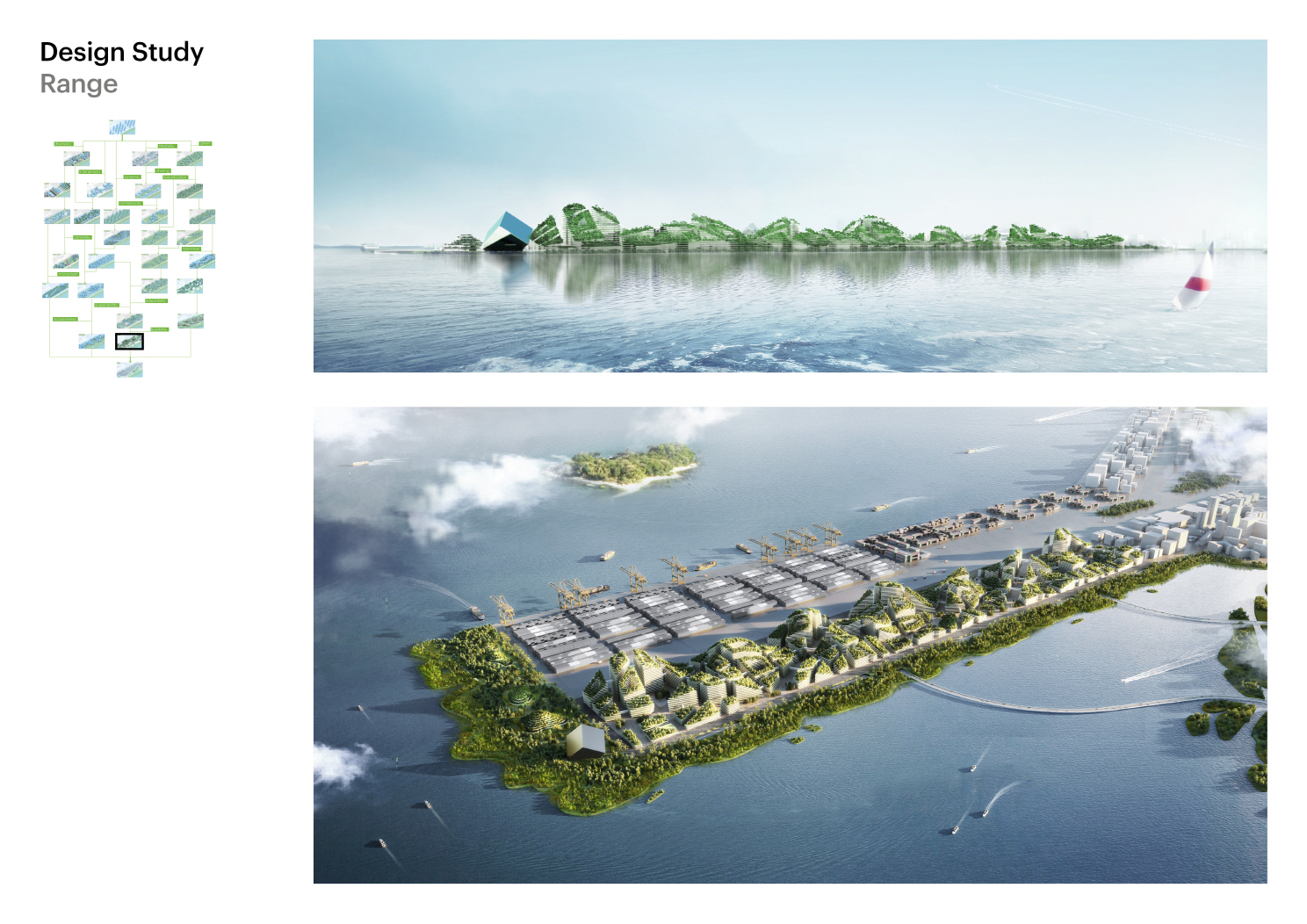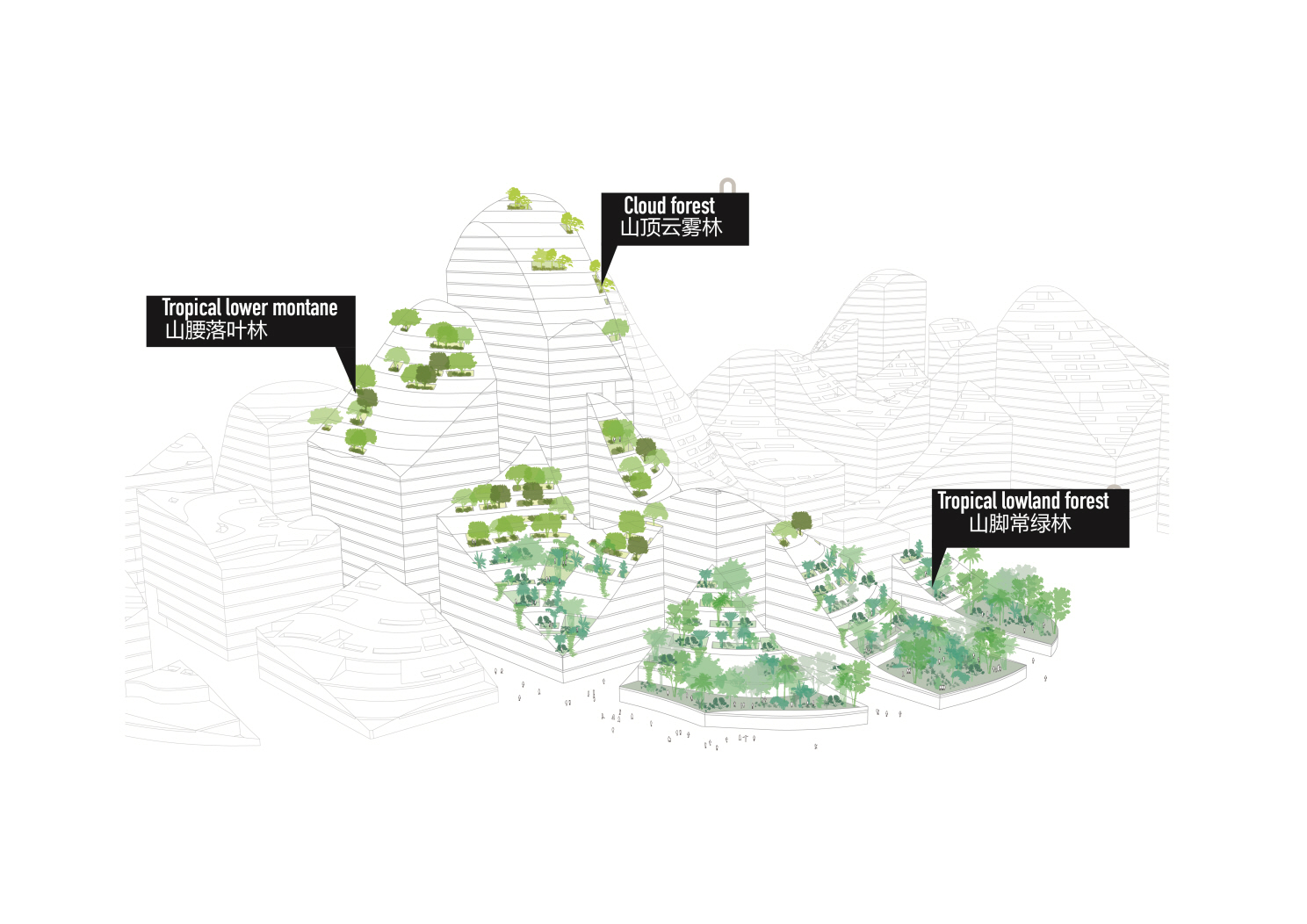AD
● 멋진 세상 속 건축디자인_ 거대한 태양광 패널을 내재한 물결치는 듯 유연한 연속된 지붕, 굴곡진 산맥을 형상화한 차별화된 역동적인 디자인, 친환경적인 미래 기술단지의 모범적인 디자인을 선보여
텐센트 캠퍼스에서 보여주고자 한 MVRDV의 마스터플랜에 따르면 길게 세로로 이어진 단지 특성을 십분 활용해 공공 교통, 마이크로 기후 그리드, 프로그램 분산을 토대로 광장, 워터프론트 파크, 루프가든, 루프 그라데이션, 퍼블릭 스페이스, 스트리트의 프로그램이 절묘하게 절충하고 엮어내고 있다. 최적화된 단지 디자인을 개발하기 위해 MVRDV 디자인팀은 28개의 서로 다른 아웃라인 디자인을 개발했고 ‘디자인 가계도’를 만들어냄으로써 디자인의 진화 흐름을 체계적으로 인식할 수 있도록 시도했다.
이렇듯 미래의 스마트 시티를 위한 MVRDV의 텐센트 캠퍼스 디자인은 그 자체로 개방적이며 역동적인 동시에 친환경적인 미래 기술단지의 모범적이면서도 차별화된 디자인을 제시하고 있다.
Following a two-year process, today MVRDV is revealing their competition entry and research process for the next Tencent headquarters campus. Located on a 133-hectare site in a prominent location in Qianhai Bay, Shenzhen, Tencent’s brief called for what is nothing short of an entire urban district including offices, homes for Tencent employees, commercial units, public amenities, schools, and a conference centre. MVRDV’s proposals and studies show the process of the making of this campus and conclude with these components integrated into a smart city district shaped like a continuous undulating mountain range, with a waterfront park winding its way around the base.
To accommodate their meteoric growth, Chinese tech giant Tencent began plans for its new headquarters in Qianhai Bay almost immediately after completion of their current Shenzhen headquarters, the Tencent Seafront Towers. But their ambition for their next home is on another level: the brief asked for a total of 2 million square metres of floor space to accommodate offices for 80,000–100,000 employees and homes for 19,000 residents, to be occupied by Tencent employees.
Beyond its scale, the brief is also technologically ambitious. Expanding on their mission statement, which foregrounds the “user value” of technology and the benefits it can bring to everyday life, they requested that their new campus be an exemplary smart city district, demonstrating the city-altering potential of the latest urban technologies.
MVRDV’s studies, culminating in the competition entry, envision the Tencent campus as a grid of over 100 buildings with an undulating roof of photovoltaic panels, with multiple bridges connecting buildings to form a continuous surface reminiscent of a mountain range. At the foot of the buildings, a waterfront park winds its way along the entire eastern side of the site, facing into the Qianhai Bay. This park also expands up the lower levels of the adjacent buildings to form greenery-filled terraces.
Placed throughout the park are many of the public buildings for the district, including a school and kindergarten, a sports centre, and data centre, among others. At the southern end of the park is the most notable building on the campus, a conference centre shaped like a rock at the foot of the hills. Flanking the entrance to Qianhai Bay, this conference centre forms an iconic marker of Tencent’s global influence.
At an intersection of the street grid in the heart of the office zone is the project’s “beating heart”, the information plaza. This spherical space, carved from the corners of four adjacent buildings, displays data related to the everyday functioning of the Tencent campus, from occupancy rates to carbon usage. Another key “smart city” intervention is the transportation strategy for the campus: along the eastern side of the site, a highway gives access to four underground car parks, but the street grid itself is reserved for autonomous cars and a shuttle bus loop that ensure employees and residents can move around easily. In addition, metro and bus lines to the city run along both eastern and western edges of the site to connect the Tencent campus to the rest of Shenzhen.
“Our studies and competition entry for Tencent are an attempt to show that the smart city is also the green city”, says MVRDV founding partner Winy Maas. “With ubiquitous smart city elements, headlined by a futuristic data hub at the heart of the campus, Tencent employees would feel enveloped by technology. But they are also literally surrounded by nature, with the serpentine park always within a short walking distance, and green terraces all around them.”
In their design process for the Tencent Campus, MVRDV conducted a complex research project to arrive at the optimal design for a modern tech campus. The design team developed 28 different outline designs, ordering them into a design “genealogy” that traced multiple evolutionary branches as the team sought to add key qualities to their previous designs. “All studies were scripted, thus preparing a new way of designing and maintaining future smart cities”, added Winy Maas. “The final competition entry was a synthesis of everything learned in this iterative process, resulting in a tech campus that is diverse, flexible, green, dynamic, open, adaptable, and above all, visionary.” >>Architect_ MVRDV, Founding Partner in charge_ Winy Maas, Jacob van Rijs, Partner_ Wenchian Shi, 자료_ MVRDV(Images_ MVRDV, Atchain, Lights CG), 기사 출처_ 데일리 에이앤뉴스_ Daily AN NEWS ‧ ANN TV(ANN NEWS CENTER) 제공
안정원(비비안안 VIVIAN AN) 에이앤뉴스 발행인 겸 대표이사, 한양대학교 실내건축디자인학과 겸임교수, 한양대 IAB자문교수
기사 제공_ 에이앤뉴스그룹(데일리에이앤뉴스_건설경제건축디자인문화예술종합미디어뉴스‧에이앤앤티브이_건축디자인건설미디어뉴스채널 ‧ 에이앤앤북스_건설지‧건설백서‧건설스토리북‧건설엔지니어링북전문출판사) ‧ 에이앤앤아카이브(ANN ARCHIVE)_건축건설문화디자인아카이브
[저작권자(c) YTN 무단전재, 재배포 및 AI 데이터 활용 금지]
텐센트 캠퍼스에서 보여주고자 한 MVRDV의 마스터플랜에 따르면 길게 세로로 이어진 단지 특성을 십분 활용해 공공 교통, 마이크로 기후 그리드, 프로그램 분산을 토대로 광장, 워터프론트 파크, 루프가든, 루프 그라데이션, 퍼블릭 스페이스, 스트리트의 프로그램이 절묘하게 절충하고 엮어내고 있다. 최적화된 단지 디자인을 개발하기 위해 MVRDV 디자인팀은 28개의 서로 다른 아웃라인 디자인을 개발했고 ‘디자인 가계도’를 만들어냄으로써 디자인의 진화 흐름을 체계적으로 인식할 수 있도록 시도했다.
이렇듯 미래의 스마트 시티를 위한 MVRDV의 텐센트 캠퍼스 디자인은 그 자체로 개방적이며 역동적인 동시에 친환경적인 미래 기술단지의 모범적이면서도 차별화된 디자인을 제시하고 있다.
Following a two-year process, today MVRDV is revealing their competition entry and research process for the next Tencent headquarters campus. Located on a 133-hectare site in a prominent location in Qianhai Bay, Shenzhen, Tencent’s brief called for what is nothing short of an entire urban district including offices, homes for Tencent employees, commercial units, public amenities, schools, and a conference centre. MVRDV’s proposals and studies show the process of the making of this campus and conclude with these components integrated into a smart city district shaped like a continuous undulating mountain range, with a waterfront park winding its way around the base.
To accommodate their meteoric growth, Chinese tech giant Tencent began plans for its new headquarters in Qianhai Bay almost immediately after completion of their current Shenzhen headquarters, the Tencent Seafront Towers. But their ambition for their next home is on another level: the brief asked for a total of 2 million square metres of floor space to accommodate offices for 80,000–100,000 employees and homes for 19,000 residents, to be occupied by Tencent employees.
Beyond its scale, the brief is also technologically ambitious. Expanding on their mission statement, which foregrounds the “user value” of technology and the benefits it can bring to everyday life, they requested that their new campus be an exemplary smart city district, demonstrating the city-altering potential of the latest urban technologies.
MVRDV’s studies, culminating in the competition entry, envision the Tencent campus as a grid of over 100 buildings with an undulating roof of photovoltaic panels, with multiple bridges connecting buildings to form a continuous surface reminiscent of a mountain range. At the foot of the buildings, a waterfront park winds its way along the entire eastern side of the site, facing into the Qianhai Bay. This park also expands up the lower levels of the adjacent buildings to form greenery-filled terraces.
Placed throughout the park are many of the public buildings for the district, including a school and kindergarten, a sports centre, and data centre, among others. At the southern end of the park is the most notable building on the campus, a conference centre shaped like a rock at the foot of the hills. Flanking the entrance to Qianhai Bay, this conference centre forms an iconic marker of Tencent’s global influence.
At an intersection of the street grid in the heart of the office zone is the project’s “beating heart”, the information plaza. This spherical space, carved from the corners of four adjacent buildings, displays data related to the everyday functioning of the Tencent campus, from occupancy rates to carbon usage. Another key “smart city” intervention is the transportation strategy for the campus: along the eastern side of the site, a highway gives access to four underground car parks, but the street grid itself is reserved for autonomous cars and a shuttle bus loop that ensure employees and residents can move around easily. In addition, metro and bus lines to the city run along both eastern and western edges of the site to connect the Tencent campus to the rest of Shenzhen.
“Our studies and competition entry for Tencent are an attempt to show that the smart city is also the green city”, says MVRDV founding partner Winy Maas. “With ubiquitous smart city elements, headlined by a futuristic data hub at the heart of the campus, Tencent employees would feel enveloped by technology. But they are also literally surrounded by nature, with the serpentine park always within a short walking distance, and green terraces all around them.”
In their design process for the Tencent Campus, MVRDV conducted a complex research project to arrive at the optimal design for a modern tech campus. The design team developed 28 different outline designs, ordering them into a design “genealogy” that traced multiple evolutionary branches as the team sought to add key qualities to their previous designs. “All studies were scripted, thus preparing a new way of designing and maintaining future smart cities”, added Winy Maas. “The final competition entry was a synthesis of everything learned in this iterative process, resulting in a tech campus that is diverse, flexible, green, dynamic, open, adaptable, and above all, visionary.” >>Architect_ MVRDV, Founding Partner in charge_ Winy Maas, Jacob van Rijs, Partner_ Wenchian Shi, 자료_ MVRDV(Images_ MVRDV, Atchain, Lights CG), 기사 출처_ 데일리 에이앤뉴스_ Daily AN NEWS ‧ ANN TV(ANN NEWS CENTER) 제공
안정원(비비안안 VIVIAN AN) 에이앤뉴스 발행인 겸 대표이사, 한양대학교 실내건축디자인학과 겸임교수, 한양대 IAB자문교수
기사 제공_ 에이앤뉴스그룹(데일리에이앤뉴스_건설경제건축디자인문화예술종합미디어뉴스‧에이앤앤티브이_건축디자인건설미디어뉴스채널 ‧ 에이앤앤북스_건설지‧건설백서‧건설스토리북‧건설엔지니어링북전문출판사) ‧ 에이앤앤아카이브(ANN ARCHIVE)_건축건설문화디자인아카이브
[저작권자(c) YTN 무단전재, 재배포 및 AI 데이터 활용 금지]
